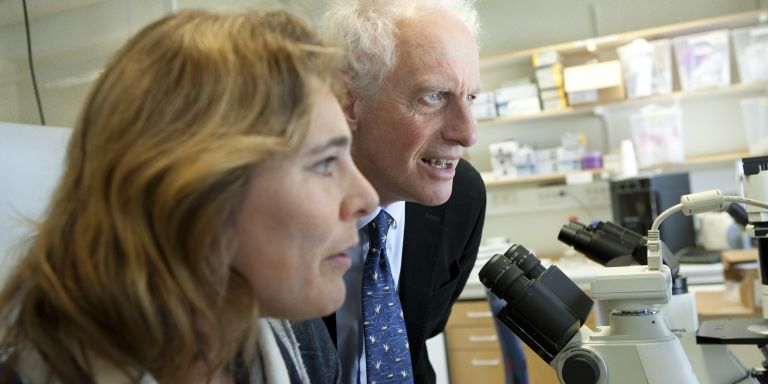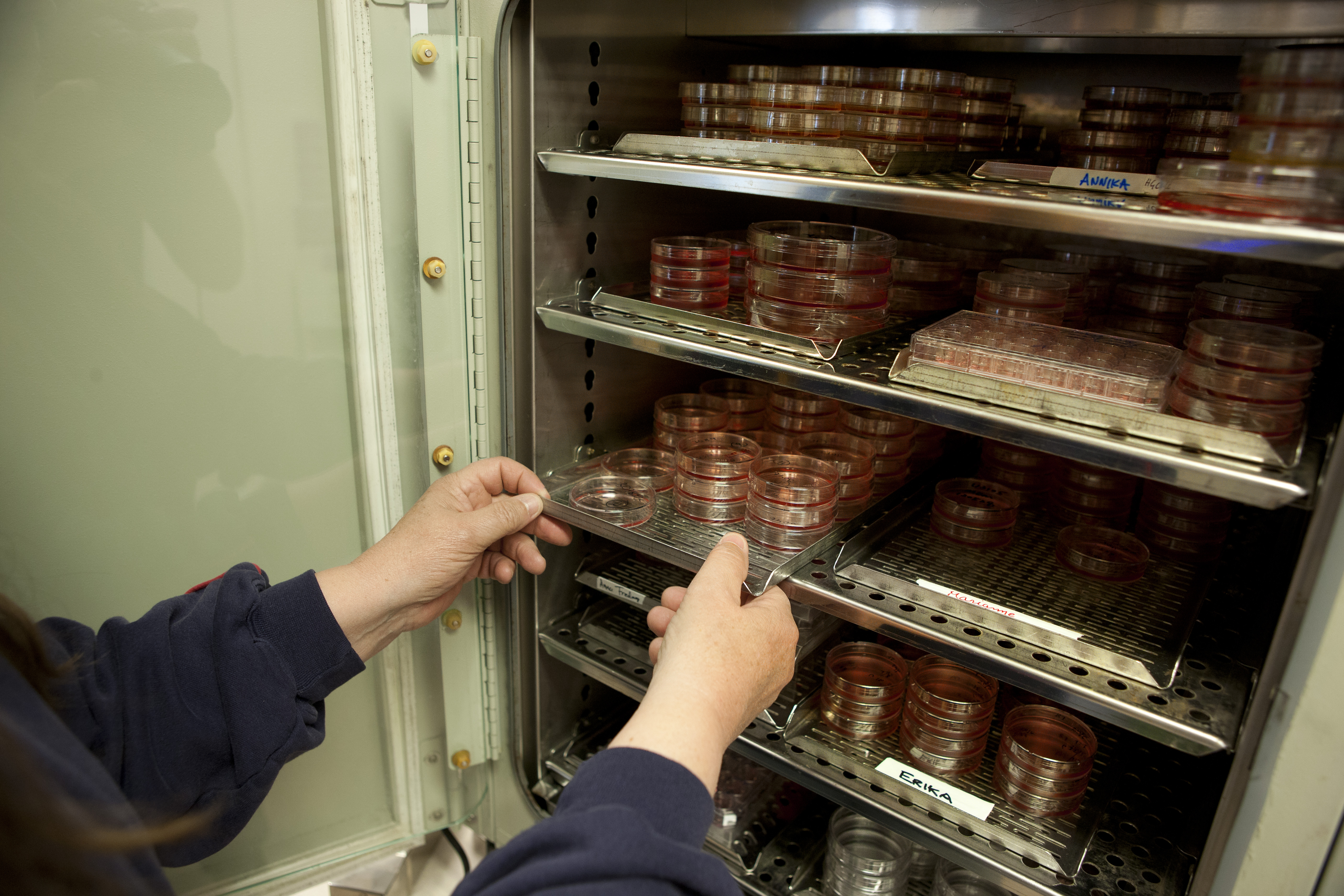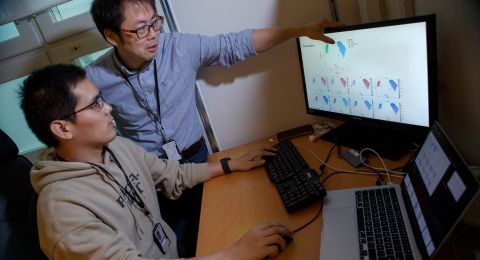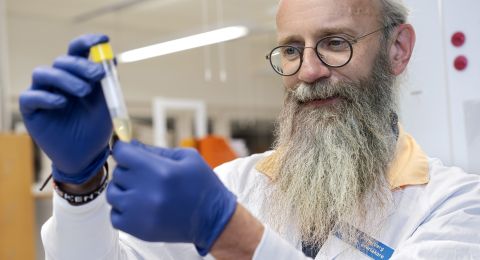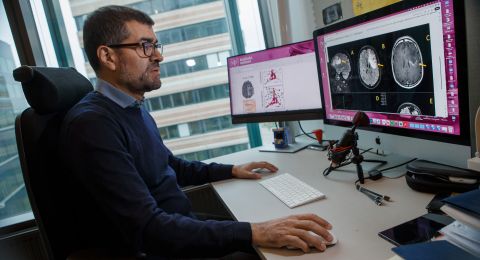
Project Grants 2011
New markers predicting glioma
Principal investigator:
Bengt Westermark, professor of tumor biology
Co-investigators:
Lene Uhrbom
Anna Segerman
Bo Segerman
Göran Hesselager
Rolf Larsson
Mats Gustafsson
Institution:
Uppsala University
Grant in SEK:
31.7 million over five years
Under the leadership of Professor Bengt Westermark, the Uppsala scientists have become experts on malignant glioma, one of the most common and most aggressive forms of brain tumors in adults. The goal is to understand what genetic changes lie behind the emergence of the tumor. Today there is no effective treatment, and mortality is nearly 100 percent. In x-rays the brain tumor appears to be local, but appearances are deceiving.
“In images it looks like a local process. Today we can cure the local tumor and administer local radiation therapy in many forms of cancer. But on the operating table it turns out that the tumor cells have spread to virtually the entire brain. This is an extreme clinical problem, which is why we need to find new methods of treatment,” says Bengt Westermark.
Most patients are affected at the age of around 60 to 70, but the disease occurs in all ages, although it is rare in children. The cause is unknown, and there are no methods for early detection. This is why new knowledge about the biological mechanisms is absolutely vital. This is the background to the new research project, funded by the Knut and Alice Wallenberg Foundation.
Variations create problems
Research has already shown that there are great differences booth among various brain tumors and among cells within the same tumor. This variation presents problems in treatment, as it is not effective against all types of tumor cells. Some cells are resistant to treatment, and some of them can moreover continue to give rise to new cancer cells.
In the normal system there are always immature cells, so-called stem cells. When they begin to multiply, a hierarchy of new cells is created in a maturing process. These mature cells form our organs, for example, but also tumors, according to Anna Segerman, a member of the research team.
“We have identified cancer cells that look extremely immature, and we can discern that these parent cells are constantly hanging around, waiting. This means that it’s not enough to kill the mature cells, because a moment later the situation will be the same.”
Isolating individual cells
But the underlying mechanism is probably even more complicated, which is why it is urgent to be able to follow and characterize the individual cells. In an earlier study, Anna Segerman was able to distinguish cells that were not growing from those that were. But now this work will be undertaken even more systematically. The idea is to divide the cells into categories, such as those that are resistant to treatment, those that form tumors, and those that do not grow.
“Two cell types are especially interesting: on the one hand, the malignant tumor cells that grow rapidly but can be treated; on the other hand, the opposite cells, cancer stem cells, that grow slowly but are extremely resistant and can recreate the tumor if they are not removed.”
“The extreme forms can be difficult to find, but we can detect variants and will have a very good picture of what characterizes resistance and tumor formation,” says Bengt Westermark.
The next step will be a matter of analyzing the genetic expression of the cells. Using transcription analysis, we will establish a profile of all the genes that are expressed, and it’ll be possible to see which genes are active and what mutations are involved. Bioinformaticians will then compile the enormous amount of data, and the result will be exciting.
“It’s a lot of work to place each cell in these masses of data, but from all these individual parts, a picture will gradually emerge. We’ll see the whole face, so to speak,” adds Anna Segerman.
Vision of new treatments
But what is unique about the project is not the actual characterization of the cells but rather the vision of finding new treatments. In a large-scale analysis the researchers will examine how the resistant cancer stem cells respond to treatment with thousands of substances, organized in a huge library. The hope is to find substances that can effectively eliminate the tumor cells. There may also be molecules that can transform resistant cells into cells that are receptive to treatment.
“This is the part that posits our work squarely on the frontlines of research. The hope is that we will be able to design new treatments and also carry out preclinical tests within the framework of the project,” says Bengt Westermark.
This knowledge will be valuable also for other forms of cancer. Today four out of ten patients die of the disease, most of them from the aggressive, widely spread cancer forms. The new concept will therefore be useful in saving many human lives in the long run.
“We know that our vision of new treatments is risky, against high odds, but if we succeed, the benefits will be huge. And what we can say for certain is that the project will generate a great amount of new information and that we will learn to understand the biology of brain tumors in an entirely new way compared with today,” says Bengt Westermark.
Text Nils Johan Tjärnlund
Translation Donald S. MacQueen
Photo Magnus Bergström
